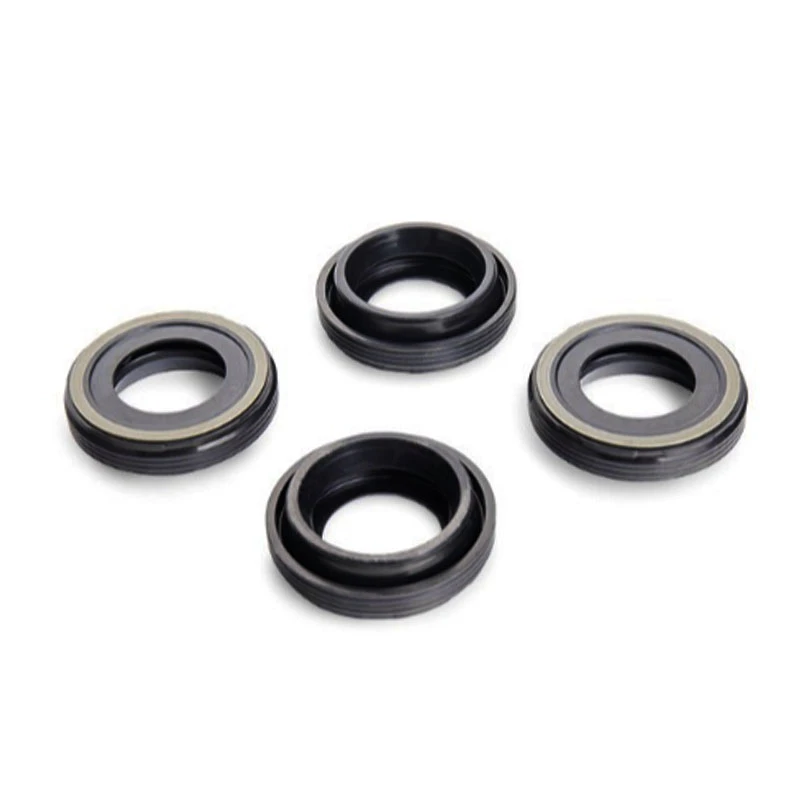Cylinder Oil Seal and Its Importance in Engine Performance and Maintenance
Understanding Cylinder Oil Seals Essential Components for Optimal Performance
In the realm of automotive and machinery engineering, the significance of each component is often magnified in terms of function, efficiency, and longevity. One such critical component is the cylinder oil seal. While it may appear to serve a minor role, the functionality of the cylinder oil seal is paramount to the overall performance of an engine or machine. This article aims to delve into the essence of cylinder oil seals, their functions, types, and maintenance practices that ensure their longevity.
What is a Cylinder Oil Seal?
A cylinder oil seal, commonly known as a lip seal or rotary shaft seal, is designed to prevent the leakage of fluids—particularly oils—from a cylindrical component. Positioned at the junction points of rotating shafts and fixed components, these seals help maintain the necessary lubrication within engines or machinery. They play an indispensable role in protecting the internal components from external contaminants like dust and water while ensuring that lubricants stay where they're needed.
Functions of Cylinder Oil Seals
The primary function of a cylinder oil seal is the prevention of lubricant leakage. When an engine operates, it requires a continuous supply of oil to minimize friction, reduce wear, and ensure efficient operation. Leakage of oil not only diminishes engine efficiency but can also lead to catastrophic failures if not addressed promptly.
Additionally, cylinder oil seals serve to shield critical engine parts from contaminants. Any ingress of dirt, debris, or moisture can compromise the integrity of the engine, leading to serious mechanical issues. By maintaining a barrier between the internal and external environments, these seals help prolong the life of engine components.
Types of Cylinder Oil Seals
Cylinder oil seals come in various shapes and materials, catering to specific needs in different applications. Here are some common types
1. Single-Lip Seals The most commonly used type, consisting of a single lip that contacts the rotating surface. They are often employed in low to moderate-pressure applications.
2. Double-Lip Seals These feature two sealing lips that provide an added layer of protection against contamination and fluid loss. They are favored in more demanding environments.
cylinder oil seal

3. Spring-Loaded Seals Incorporating a spring around the lip, these seals ensure consistent contact with the shaft while accommodating potential wear and thermal expansion.
4. Custom Seals In some cases, standard seals may not meet the specific requirements of an application. Custom-designed seals can be manufactured based on precise dimensions and performance needs.
Maintenance of Cylinder Oil Seals
To maximize the lifespan and effectiveness of cylinder oil seals, proper maintenance is crucial. Here are some key practices
1. Regular Inspection Periodic inspection of oil seals for signs of wear, cracks, or deformation is essential. Early detection of issues can prevent extensive damage.
2. Proper Installation Ensuring that seals are installed correctly is vital. Misalignment can lead to premature wear or failure.
3. Use of Quality Lubricants The choice of lubricant plays a critical role in the longevity of the oil seal. Utilizing high-quality oils reduces friction and wear.
4. Contaminant Control Taking measures to minimize exposure to dirt and moisture can significantly extend the life of cylinder oil seals. This may involve using dust covers or ensuring proper system ventilation.
Conclusion
In summary, cylinder oil seals are vital components that contribute significantly to the reliability and efficiency of engines and machinery. Understanding their function and the importance of proper maintenance can lead to improved performance and extended equipment life. As technology continues to advance, innovations in sealing technology will likely emerge, further enhancing the capabilities and applications of cylinder oil seals. In an era where machinery efficiency is paramount, investing time and resources into understanding and maintaining these critical components is a necessity that cannot be overlooked.
-
The Ultimate Guide to Boat Propeller Bearings and Trailer Wheel Bearings
News Jul.31,2025
-
The Essential Guide to Marine Bearings and Boat Trailer Wheel Bearings
News Jul.31,2025
-
The Complete Guide to Heavy Duty Seals: Protecting Doors and Spaces Efficiently
News Jul.31,2025
-
Essential Guide to Marine Shaft Bearings and Boat Trailer Axle Bearings
News Jul.31,2025
-
Comprehensive Guide to Marine and Trailer Bearings for Safe Boating and Transport
News Jul.31,2025
-
Comprehensive Guide to Automotive Oil Seals: Protecting Your Engine and Shafts
News Jul.31,2025
-
Understanding Automotive Oil Seals: Essential Components for Engine and Shaft Protection
News Jul.30,2025
Products categories















